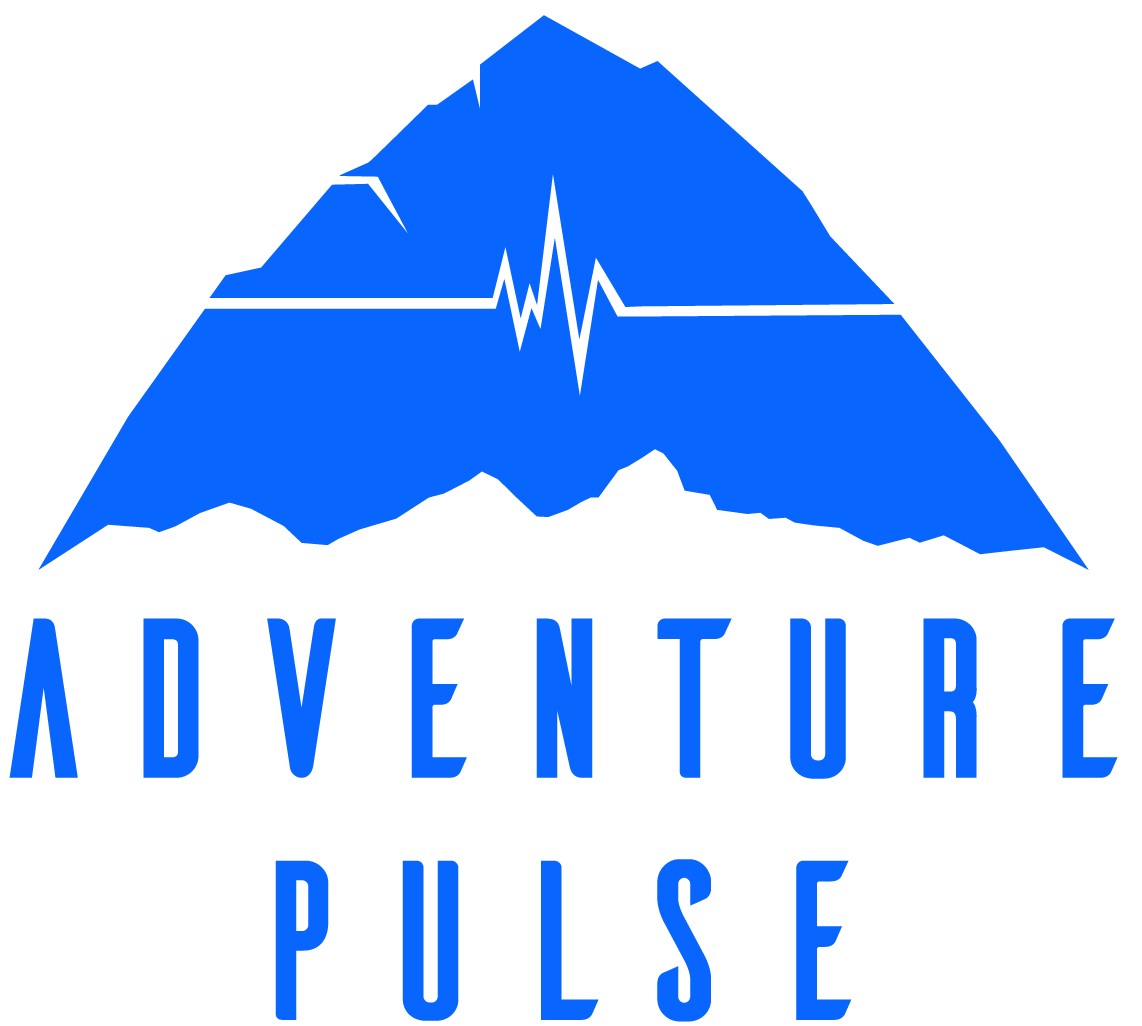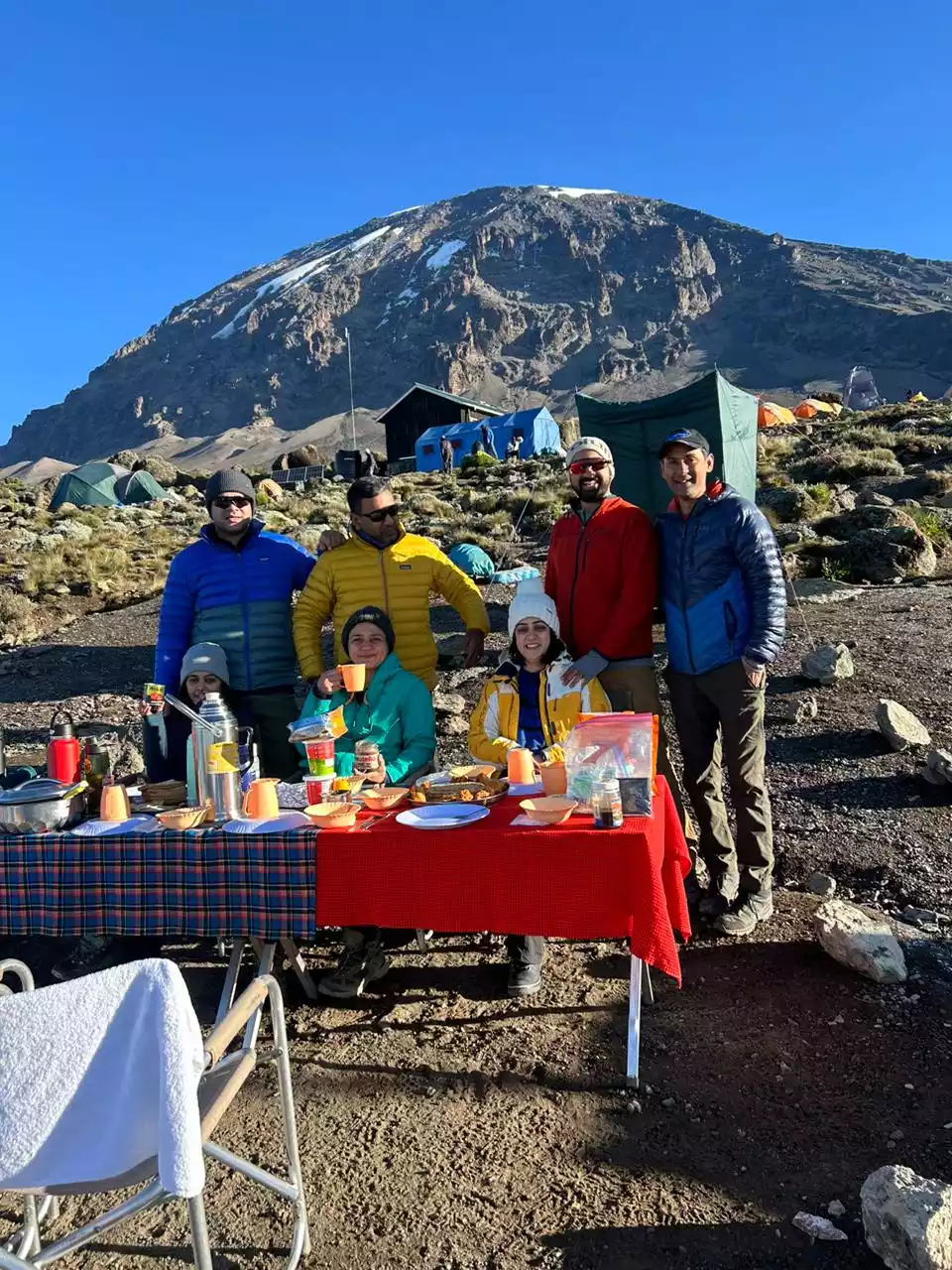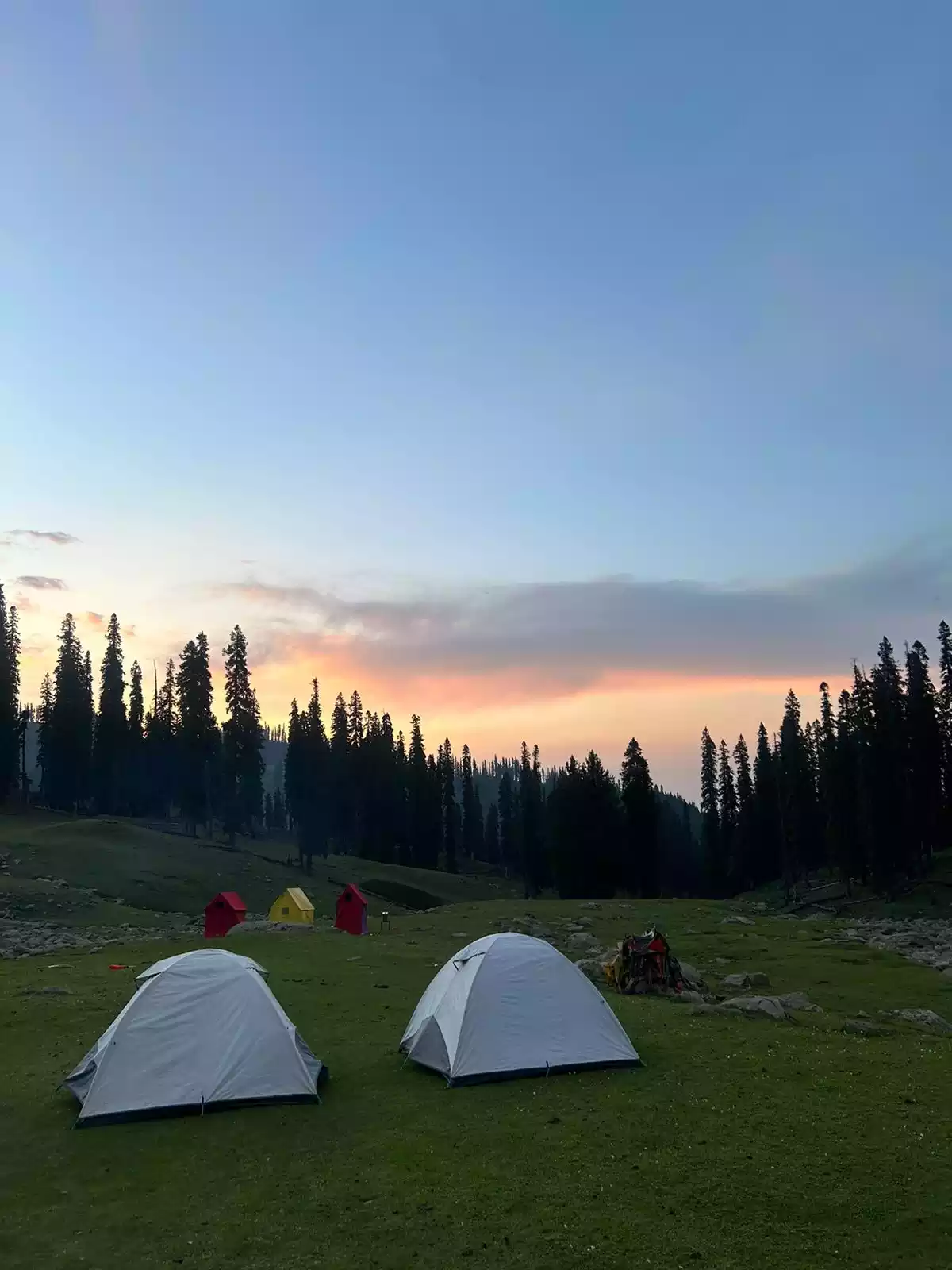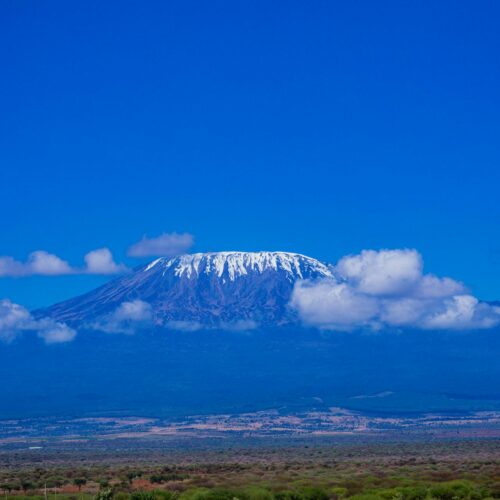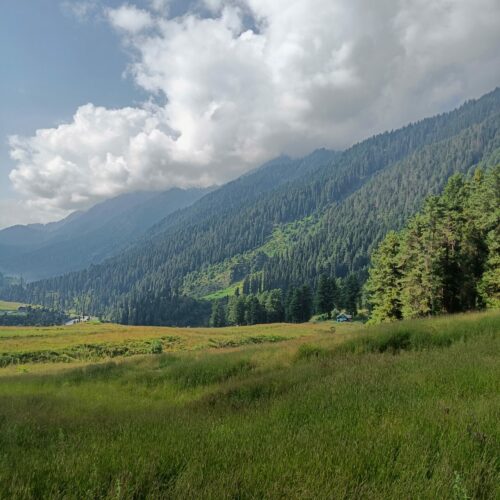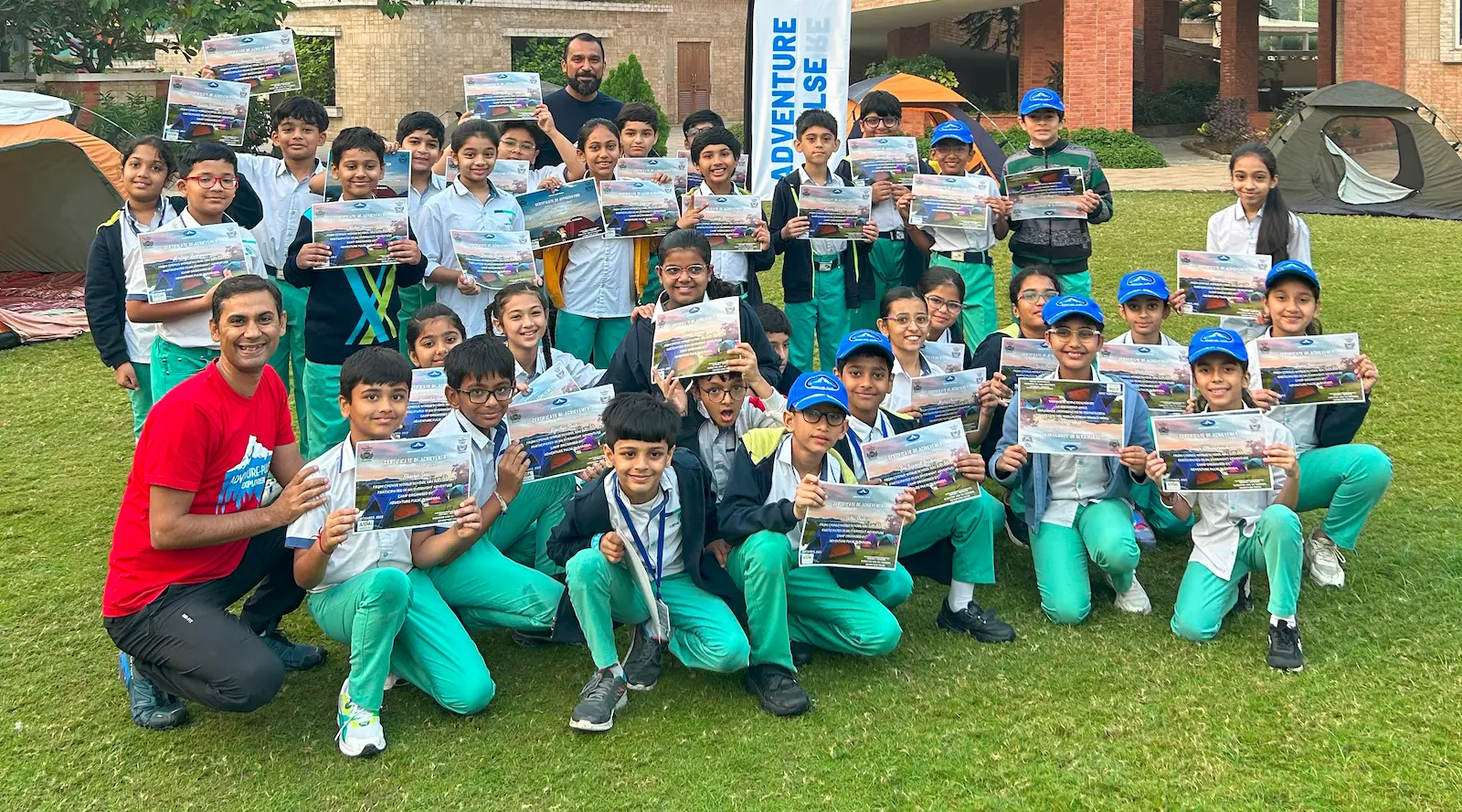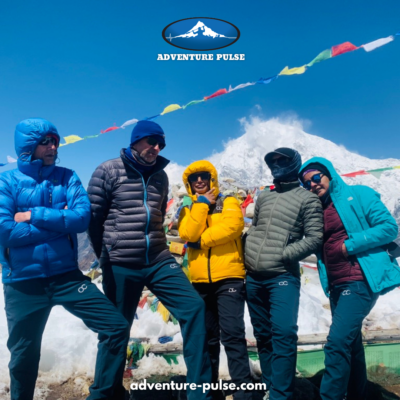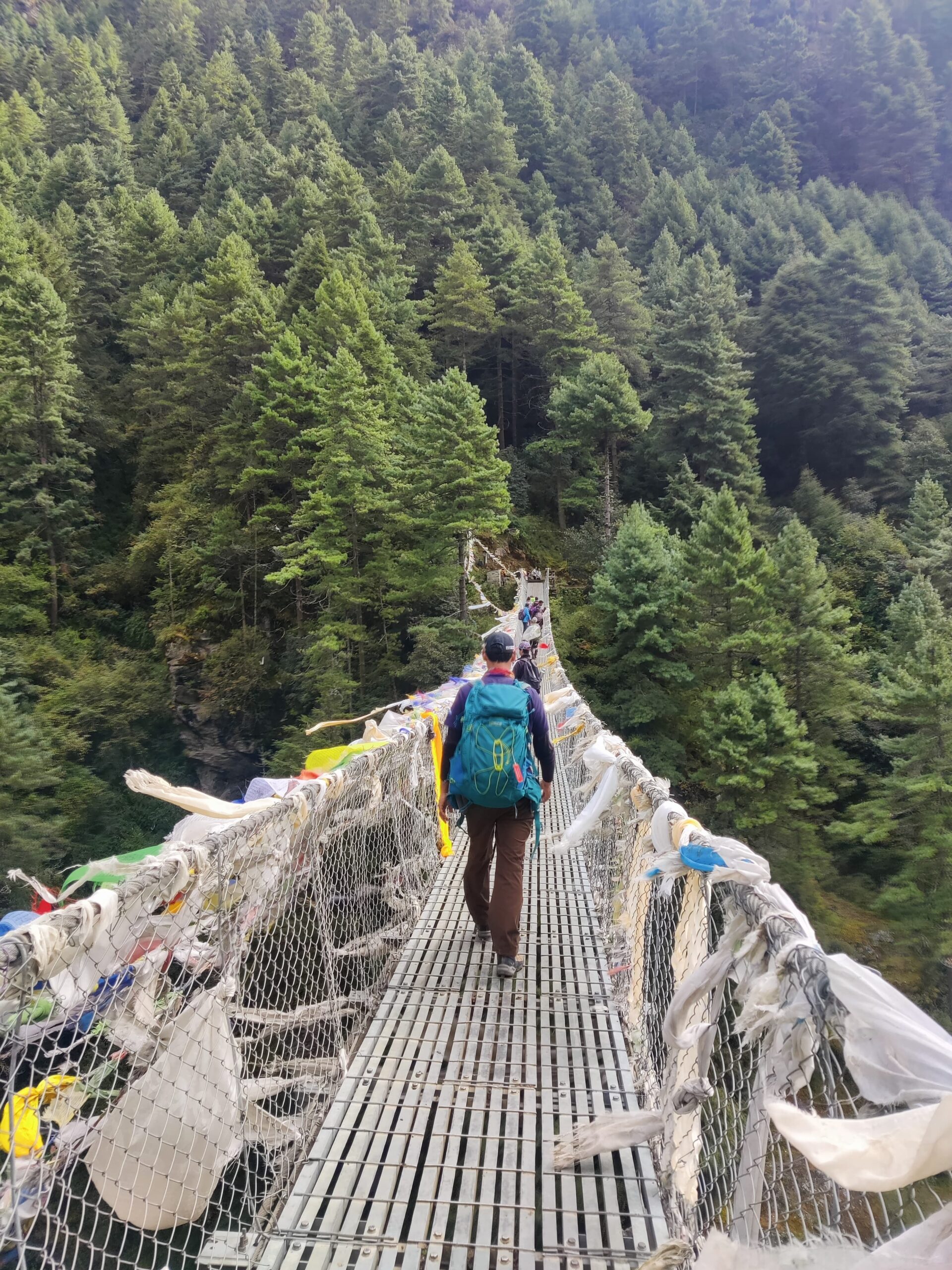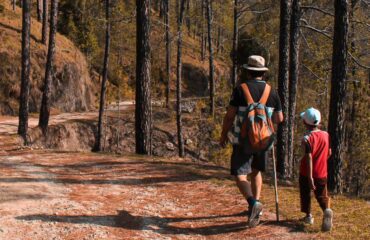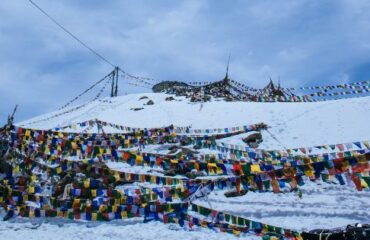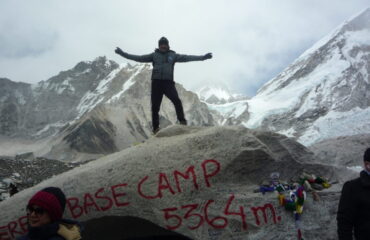
Overview of the Everest Base Camp Trek
Nepal the home of mountains, where Mount Everest lies has become a popular trekking destination. With a hoard of trekkers coming in to the region to explore the Base camp of the tallest mountain in the World. The Everest Base Camp Trek not only surprises us with its stunning adventure but also gives a lifetime experience to conquer the most iconic and highest peak of the world. The trek offers an unparalleled journey from the forests of rhododendrons and oaks to the small villages. You can also experience the Sherpa culture, which adds uniqueness to the trek.
The Everest Base Camp is one of the most difficult and challenging treks. It goes through Sagarmatha National Park, which is also recognized as a UNESCO World Heritage Site. The dramatic mountains attract trekkers with breathtaking views of the landscape, streams, waterfalls, glaciers, and diverse flora and fauna. The base camp trek takes you to an altitude of 5,545 meters and offers the experience of staying in tea houses at high altitudes. The stay provides a beautiful culture of the Nepalese people and Sherpas, where you get to know and learn about mountain life. According to reports, around 40,000 people trek to the base camp from Lukla Airport each year. The trek starts from Phakding to the iconic Namche Bazaar and continues towards one of the most popular monasteries, Tengboche. The final push to reach the Everest Base Camp from Lobuche to Gorakhshep marks the major milestone of this trek.

In this blog, we shall cover the final push of the trek in more detail:
Gateway Villages on Everest Base Camp
Lobuche
Lobuche, covered in snow, lies at an altitude of 4,940 meters near the bottom of the Khumbu Glacier. This village offers unique stays at mountain-facing tea houses and comfortable lodging options, along with nutritious meals like porridge, rice, and dal. Lobuche shares its name with many nearby peaks; the two main peaks are Lobuche East, also referred to as the trekking peak, and Lobuche West, referred to as the expedition peak. The beauty of this place changes with the seasons. The temperature ranges from season to season, but usually, during trekking months, the temperature is around 0° to -10°C. In winter, it drops considerably, sometimes as low as -15°C, and the weather is mostly cloudy during the day.
Gorakhshep
Gorakhshep, situated at a height of 5,164 meters, is the last village before reaching Everest Base Camp. Sherpas own this village, which opens only during the trekking season. Gorakhshep also serves as the base for Kala Patthar, which is a hike to the top at 5,545 meters. This peak is usually part of itineraries as an add-on to the Everest Base Camp Trek. Since this is an optional excursion, many trekkers avoid it due to its early morning schedule and the fatigue from the journey.
The walk from Lobuche to Gorakhshep is rocky with loose stones and gets covered with snow in winter. As you reach nearer, you get a clearer view of Mount Everest. You will also witness different peaks like Nuptse, Pumori, Ama Dablam, and Khantega, along with Kala Patthar.
In Gorakhshep, the tea houses are far more basic compared to those in Namche, Debuche, and Dingboche due to the altitude. These tea houses have limited facilities, but they are more than enough for trekkers to spend the night and stay warm indoors with hot food served at their tables. Food, water bottles, and Wi-Fi facilities are far more expensive here.

The optional hike to Kala Patthar is usually done to catch the sunrise on top of Everest. If you choose to do this, we are sure you will be speechless by the breathtaking beauty of the landscape around you. Kala Patthar offers unparalleled panoramic views of Mount Everest, Nuptse, and Pumori. At 5,545 meters, it is a popular destination, providing a front-seat view of the iconic mountain. Especially during sunrise and sunset, it rewards trekkers with awe-inspiring 360° views of the Himalayas.
Highlights of the Walk to Everest Base Camp
The Lobuche to Gorakhshep trek is the final walk to Everest Base Camp.
- The stretch from Lobuche to Gorakhshep is the highest trekking route in the world and the highest of this trek as well.
- Sagarmatha National Park is the highest national park in the world and is a recognized UNESCO World Heritage Site. It is rich in biodiversity and home to many rivers, streams, glaciers, and valleys.
- The majestic views of the Himalayan ranges and the snow-covered peaks of Everest, Nuptse, Ama Dablam, Khumbutse, and more will stay etched in your heart forever.
- Walking on the path once taken by Sir Edmund Hillary and Tenzing Norgay Sherpa’s expedition team will inspire you.
- The sunrise paints the Himalayan peaks in shades of gold and pink, creating a breathtaking spectacle, while the sunset casts a fiery orange glow over the rugged terrain, making the journey from Lobuche to Gorakhshep truly unforgettable.
- The prayer flags, stone cairns, and memorials at Thukla Pass mark the landmark to honor climbers who died in their attempts to conquer Everest.
- Lastly, Kala Patthar, the highest point of the Everest Base Camp Trek, offers the best view of Mount Everest.
Altitude Gain and Acclimatization
The high-altitude gain on the trek makes the Everest Base Camp Trek both challenging and significant. The walk from Lobuche to Gorakhshep is minimal, but the dry, icy terrain and freezing cold make it tougher. The altitude gain thins the oxygen, and the cold air numbs your nose. It is recommended to walk at your own pace since the rocky, snow-covered paths add a physical challenge.
Acclimatization plays a major role in the trek. Lack of acclimatization and not getting enough rest can lead to Acute Mountain Sickness (AMS). This walk challenges you daily with the increasing altitude. Most itineraries include two built-in acclimatization days—one at Namche Bazaar and one at Dingboche. These two days allow trekkers to adapt to the changing altitude and temperature. However, depending on one’s fitness level, you may also add an extra day at either Lobuche or Gorakhshep before heading to Base Camp.
When you reach Gorakhshep, the last settlement before Base Camp, make sure to rest well. This rest ensures your preparation for the final push. Often, strategies and altitude adjustments are made to increase the chances of reaching the base camp safely and comfortably. We recommend that trekkers stay hydrated, walk at their own pace, and avoid overexertion, as it can negatively impact the chances of completing the journey. If you feel any symptoms of AMS, it is best not to ignore them and report them to the guides who can help you deal with them.
Terrain, Start Time, and Duration
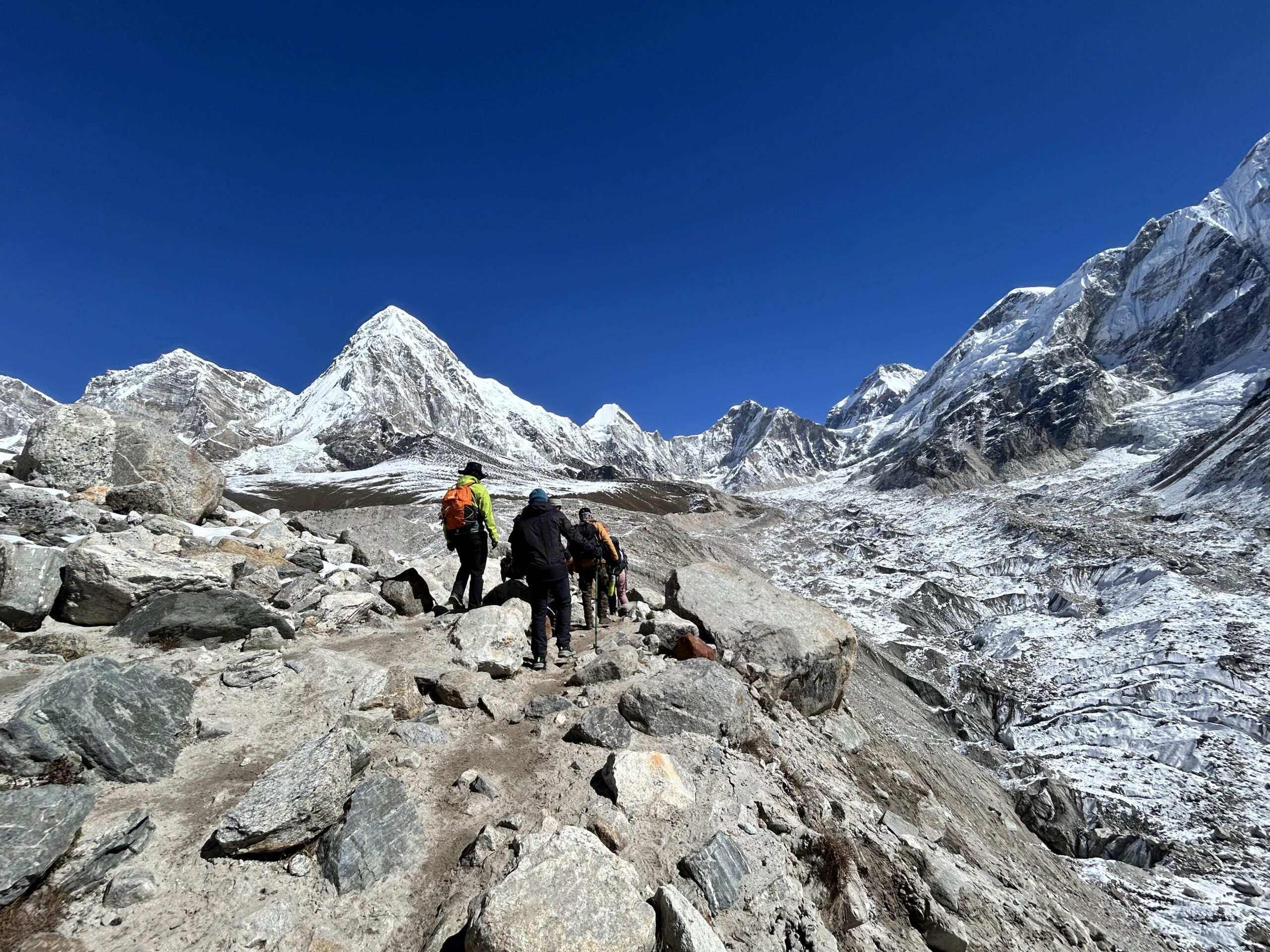
The walk from Lobuche (4,910 m) to Gorakhshep (5,160 m) has a steep, rocky path. Some parts of the terrain have boulders, which can be tricky to cross, especially if there is a crowd of trekkers and yaks. It is necessary to be careful here to avoid slipping or twisting your ankles. Whenever unsure, the best option is to find the most stable rock, take a break, let the crowd clear, and then proceed. Aside from these boulders, there are some ascents you need to climb to reach Gorakhshep. Take your time on these ascents and maintain a consistent pace.
The start time is usually just after breakfast, and you can hear the tintinnabulation of the yak bells. If you leave early for Gorakhshep, the sky is clear, with an evident view of the peak, and you can reach it before the afternoon clouds roll in. The distance between Lobuche and Gorakhshep is 4.5 km, which takes around 3-4 hours on average. However, it can take longer depending on how you feel and the pace you’re comfortable with. Some trekkers even complete this walk in 2 hours. It differs from person to person. It is important to remember that Gorakhshep is just a halfway stop. After Gorakhshep, the final destination is Everest Base Camp, and the return trip to Gorakhshep adds another 3+3 km. Thus, you need to save some energy and stamina for the final push to Base Camp and the return to your tea house.
Difficulties or Challenges of the Journey
- The Everest Base Camp Trek is considered to be a difficult trek. One of the major challenges is the high risk of acute mountain sickness. The high altitude is a common cause of fatigue due to low oxygen saturation. It is crucial to understand the importance of acclimatization and pace yourself accordingly.
- Another difficulty is the trek’s duration. The standard itinerary of the Everest Base Camp Trek lasts 11 days, which can feel unusually long for some trekkers. The duration can be exhausting if you are not physically and mentally prepared for the challenge.
- The uneven trails and boulders require careful walking and concentration. Pace your steps, as loose rocks and steep ascents can cause slips and falls.
- The weather in the mountains changes suddenly. Especially near Lobuche and Gorakhshep, sudden snowfall and higher wind-chill factors are common. Trekkers often fall prey to cold, nose blocks, chest congestion, etc., at this altitude. It is important to keep yourself layered well throughout the journey.
- The long walking durations in places like Namche, Tengboche, and Gorakhshep are physically demanding. These walks truly test your stamina and endurance.
- Mornings and evenings can become freezing cold, with temperatures dropping as low as -10°C to -15°C.
Stops on the way
The distance between Lobuche and Gorakhshep is approximately 4.5 km. The stays are in Himalayan lodges and teahouses, which offer both accommodation and meals. The meals include Dal-Bhaat Tarkari, soupy noodles, Aloo Parathas, and many other options. Since the distance is short, and the hiking time is under 4 hours, no tea houses or shops are available along the way. Therefore, it is recommended to carry trail snacks and enough water.
What the Entire Day Looks Like
After a night of rest, the morning starts with tea or coffee and the sounds of yak bells. The Sherpas and assistant guides are usually the first to wake up, helping the tea house kitchen with breakfast orders. Breakfast is usually early here, around 5:00 or 5:30 am, so that you can reach Gorakhshep in time.
Post-breakfast, around 6:30 am, teams leave for their walk, taking multiple stops between the two villages. The beginning of the walk will feel freezing cold, but as you walk, your body will start getting warmer. If the sun is out, the valleys will look like a golden canvas beaming with light. If it’s cloudy, the landscape will resemble a cold desert. Trekkers usually feel high energy during the first part of the morning. Ensuring a slow, consistent pace, drinking enough water, and munching on trail snacks will make this walk manageable. Once you reach Gorakhshep, take a short break, and enjoy lunch before you proceed to Everest Base Camp or Kala Patthar. Some trekkers opt to rest for the night in Gorakhshep after visiting the Base Camp, but others prefer to return the same day.

Conclusion
The journey from Lobuche to Gorakhshep marks the final stretch of the iconic Everest Base Camp Trek, offering trekkers unforgettable views and experiences. The challenging terrain, high altitude, and unpredictable weather make this trek a true test of endurance and perseverance. However, the breathtaking panoramas of Mount Everest, Nuptse, and the surrounding peaks, along with the opportunity to connect with Sherpa culture, make every step worthwhile.
Whether you choose to push onward to Everest Base Camp, enjoy the views from Kala Patthar, or simply absorb the tranquility of the mountains, this part of the trek leaves a lasting impression. By pacing yourself and staying mindful of acclimatization, you’ll be rewarded with an experience that’s not only physically demanding but spiritually enriching.
Follow us on Social Media : Trip Advisor | Instagram
Blog Credits – Nabamita Choudhury
